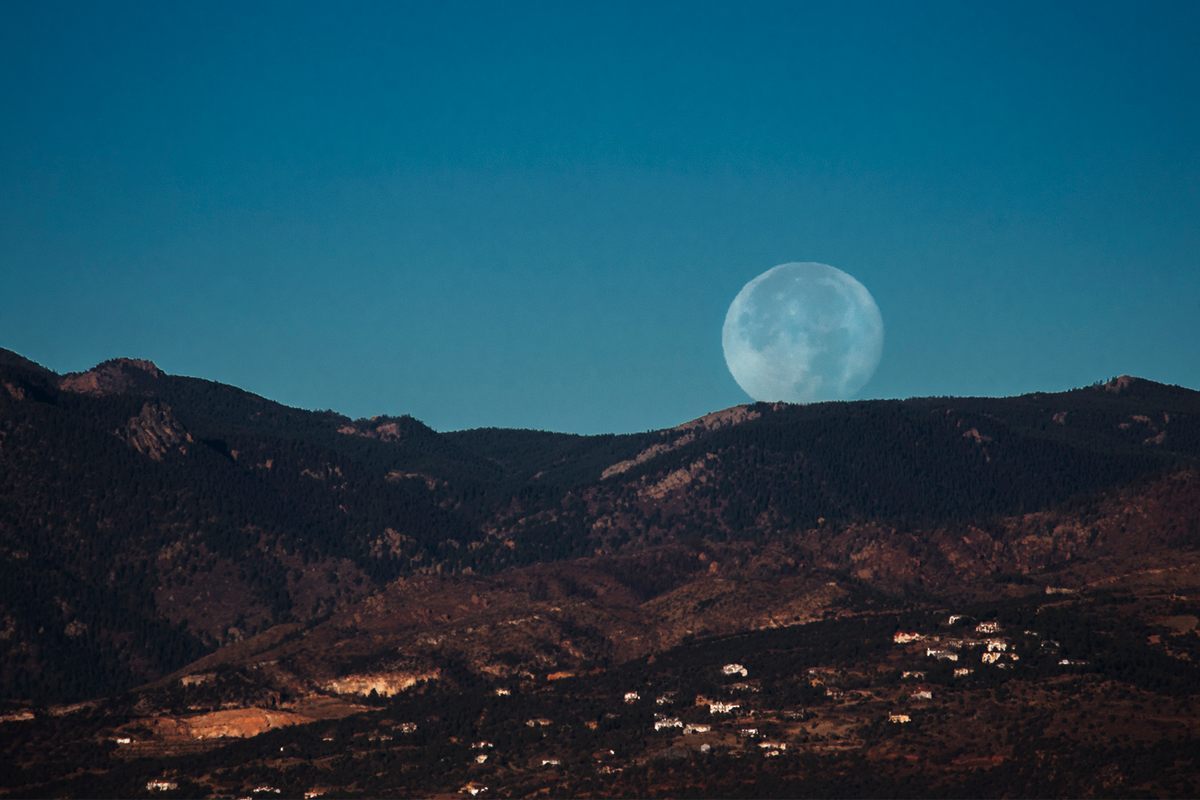8 Amazing Tales of Our Eternal Fascination With the Moon
Inside the race to map, explore, own, and even spend eternity on the lunar surface.
August 2023 promises to be a big month for the Moon. On August 1 and August 30 (Eastern Time), the orb will be near its perigee—its closest point to Earth—and the full moon will loom large in the night sky, a phenomenon brilliantly branded as the “supermoon.” The full moon on August 2 is the Sturgeon Moon, a name drawn from the belief that the best fishing occurs under its glow, and the one on August 30 is a Blue Moon, the relatively rare second appearance of a full moon in a single month.
But even when the moon isn’t at its (seemingly) biggest and brightest, humans have been entranced by it as a celestial body. From the Atlas Obscura archive, explore centuries of attempts to map, explore, own, and even spend eternity on Earth’s only natural satellite.

During the Space Race, Gas Stations Gave Away Free Maps to the Moon
by Kyle Carsten Wyatt
Humans attempted to map the lunar surface long before Galileo famously trained his “spyglass” on the Moon in 1609. At Knowth, a Neolithic site in County Meath, Ireland, for example, a 5,000-year-old rock carving depicts what appears to be Mare Imbrium, Mare Frigoris, and Mare Serenitatis, the Moon’s volcanic “seas.” So perhaps it shouldn’t be a surprise that Standard Oil tried to do the same in the 1910s, promoting lunar maps alongside more practical guides to the United States’ expanding highway system, despite the the obvious lack of money-making gas stations on the Moon.
All the Other Names for the Moon
by Sarah Laskow
The moon in the sky is one of the great constants of living on Earth, even as it’s constantly changing. It disappears, it returns, time after time. And so over and over again, we give the moon different names, for the ways it changes and the rhythms it marks.

The Legal Battle Over Owning a Piece of the Moon
by Sarah Durn, Associate Editor
Due to a strange history that includes mislabeling, a U.S. Marshal sale, and a years-long court case, some tiny samples of lunar dust, divided into six aluminum cylinders, were the only pieces of the Moon collected from any Apollo mission that could be legally sold at auction.
See the First Film of a Total Solar Eclipse
by Sabrina Imbler
In 1900 in North Carolina, a British magician captured the first-ever footage of a solar eclipse—but it disappeared soon after. For more than a century historians hunted for this rare scientific marvel, which was finally rediscovered in 2019.

Eugene Shoemaker Is Still the Only Man Buried on the Moon
by Eric Grundhauser
Twelve people have walked on the Moon, but only one human has ever been laid to rest there—at least so far. On January 6, 1998, NASA’s Lunar Prospector blasted off for the south pole of the Moon, looking for ice, and carrying an ounce of the ashes of Eugene Shoemaker, a renowned planetary scientist who dreamed of being an astronaut, until he was disqualified for medical reasons.
There Is Just One Sculpture on the Moon
by Evan Nicole Brown
With no fanfare, astronauts David Scott and James Irwin left a monument on the Moon during the August 1971 Apollo 15 mission. The three-inch-long sculpture was designed by Belgian artist Paul Van Hoeydonck and is called Fallen Astronaut. It includes a plaque with the names of 14 men, Soviet and American, who died in the countries’ space programs.

Who Keeps Track of All the Craters on the Moon?
by Jessica Leigh Hester
Women have worked in astronomy for centuries, often without recognition, as observers, number-crunchers, and innovators. Among them was Mary Blagg, an amateur astronomer who was a pioneer in the ever-expanding field of naming every little thing in the solar system.
The Apollo Astronauts Signed Memorabilia in Quarantine—as Life Insurance
by Jesse Hicks
The three Apollo 11 astronauts—Neil Armstrong, Buzz Aldrin, and Michael Collins—knew they might not make it back to Earth. And all three had families they wanted supported if the worst happened. So in the weeks before the launch, the men autographed hundreds of envelopes, each with a special design commemorating the mission and a postage stamp celebrating a previous Apollo mission. If the astronauts didn’t return, their families could sell these “insurance covers,” as they were known, to stay afloat.















Follow us on Twitter to get the latest on the world's hidden wonders.
Like us on Facebook to get the latest on the world's hidden wonders.
Follow us on Twitter Like us on Facebook